Occupation Architect | Name Jean-Pierre Houdin Role Architect | |
Design Egyptian pyramid construction techniques Movies Unlocking the Great Pyramid Books Khufu's Pyramid Revealed, khufu: the secrets behind the building of the great pyraid | ||
Great pyramid mystery solved
Jean-Pierre Houdin ([udɛ̃]; born June 26th 1951 in Paris), is a French architect perhaps most notable for a theory on pyramid construction.
Contents
- Great pyramid mystery solved
- Jean Pierre Houdin
- Early life and education
- Pyramid construction theory
- Analytical process
- Videography
- References

Jean Pierre Houdin
Early life and education

Houdin grew up in Abidjan, Côte d'Ivoire, where his father was the director of a construction company. As a small boy, he spent his spare time on construction sites while his mother, who was a doctor, cared for her patients in a bush dispensary. His interest in building and construction grew out of this first period of his life.
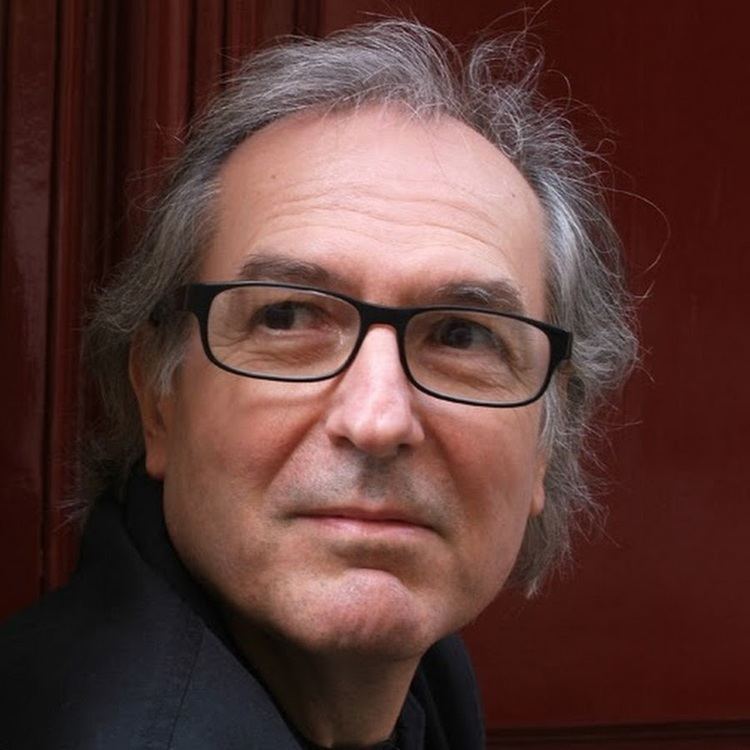
Back in Paris, after the baccalauréat, he enrolled in the École des Beaux-Arts to study architecture. After obtaining his diploma in 1976, he set up as an independent architect, a profession that he would follow for twenty years. He participated in the construction of a large number of residential and office buildings in and around Paris. At the same time, with his wife Michelle and a friend of his, he opened an avant-garde art gallery and salon called Les Enfants Gâtés, which over a period of ten years supported scores of young artists, and which became a centre for the arts in Paris at the turn of the 1980s and 1990s.
Pyramid construction theory
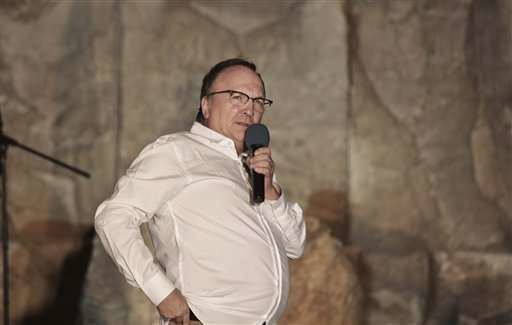
In 1999, Houdin's father, a retired civil engineer, started to develop the idea that the pyramids had been built from the inside. Jean-Pierre Houdin, using advanced 3D modelling technology, helped him identify a construction anomaly which they named "the spiral structure". It looked exactly like a ramp built inside the pyramid which they thought could have played a part in its construction. In 2003, his father created the Association of the Construction of the Great Pyramid (ACGP) in order to promote the project. This association enabled him to meet a number of experts.
Analytical process

In 2005, Mehdi Tayoubi and Richard Breitner from Dassault Systèmes invited him to join a new sponsorship programme “Passion For Innovation”. Together, they decided to examine the theory in the light of Dassault Systèmes's industrial and scientific 3D solutions. Using software applications such as CATIA to reconstitute the site of this gigantic construction in three dimensions allowed them to test in real-time whether such an approach was plausible. In order to explain and communicate it, Tayoubi and his team used 3D technology as a teaching medium and proposed an interactive voyage through time in three dimensions. This was presented both on the giant screen of La Géode (a famous hemispheric theater in Paris), and on the Internet. Also in 2005, a project was initiated to analyse the cracks in the King's Chamber of the pyramid. The group consisted of Houdin, the egyptologist Bob Brier, Tayoubi, Breitner, and a team of engineers from Dassault Systèmes. Their choice of software tools such as SIMULIA, are normally used by industrial corporations to simulate the behaviour of their products in operation, and to detect any structural weaknesses in order to solve problems as early as the products' design phase.
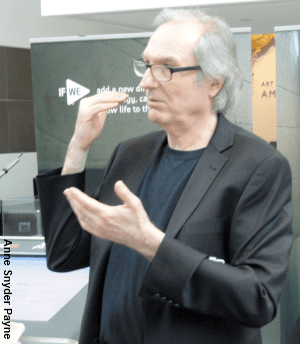
His/their scheme involves the use of a regular external ramp to build the first 30% of the pyramid, with an "internal ramp" taking stones up beyond that height. The stones of the external ramp are re-cycled into the upper stories, thus explaining the otherwise puzzling lack of evidence for ramps.
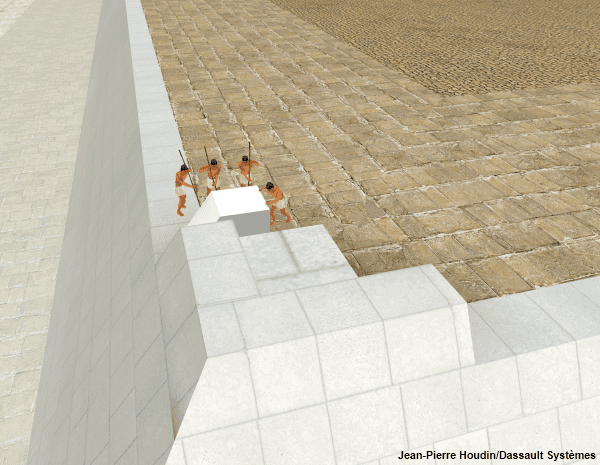
After 4 years working alone, Houdin was joined by a team of engineers from the French 3D software company Dassault Systemes, who used the most modern computer-aided design technology available to further refine and test the hypothesis, making it (according to Houdin) the only one proven to be a viable technique. In 2006 Houdin announced it in a book: Khufu: The Secrets Behind the Building of the Great Pyramid, and in 2008 he and Egyptologist Bob Brier wrote a second one: The Secret of the Great Pyramid
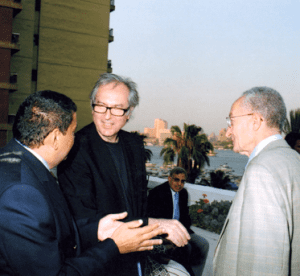
In Houdin's method, each ramp inside the pyramid ended at an open space, a notch temporarily left open in the edge of the construction.(see diagram) This 10-square-meter clear space housed a crane that lifted and rotated each 2.5-ton block, to ready it for eight men to drag up the next internal ramp. There is a notch of sorts in one of the right places, and in 2008 Houdin's co-author Bob Brier, with a National Geographic film crew, entered a previously unremarked chamber that could be the start of one of these internal ramps. In 1986 a member of the French team (see below) saw a desert fox at this notch, rather as if it had ascended internally.
Houdin's thesis remains unproven and in 2007, UCL Egyptologist David Jeffreys described the internal spiral hypothesis as "far-fetched and horribly complicated", while Oxford University's John Baines, declared he was "suspicious of any theory that seeks to explain only how the Great Pyramid was built".
The team concluded that the pyramid’s architect, Hemiunu, concerned that the cracks imperiled the whole structure, had cut a tunnel into a sealed space above the burial chamber to assess the damage, and then had filled the cracks with plaster as a tell-tale that would indicate if they were widening. The beams held and the pyramid was completed.
